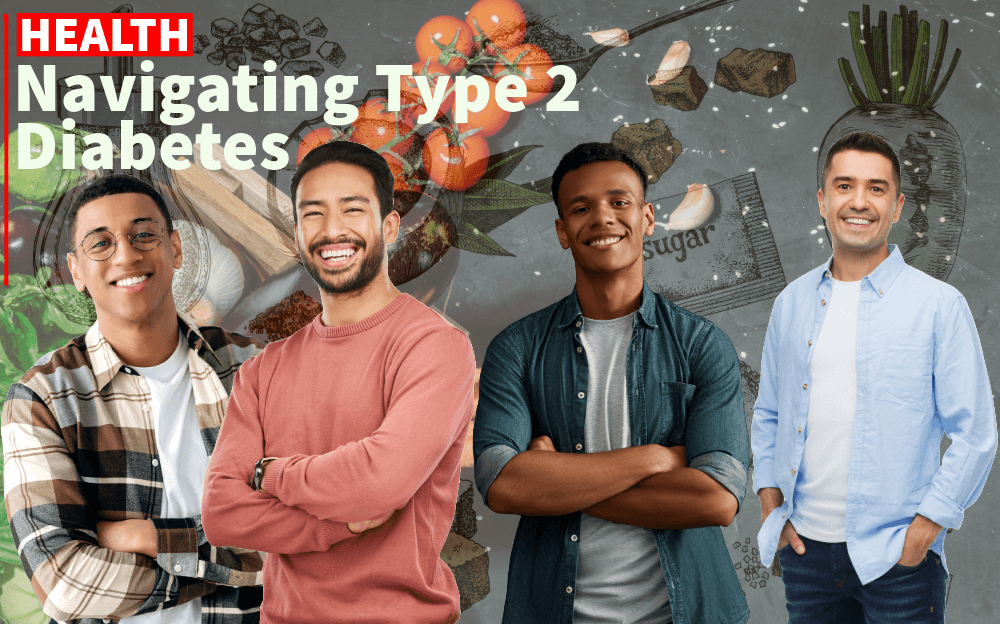Navigating Type 2 Diabetes: A Black and Latino Perspective on Culturally Relevant Diet and Lifestyle
 By Latino.Black Media | 2024-04-20
By Latino.Black Media | 2024-04-20
Join me on a journey as we delve into the complexities of living with type 2 diabetes, particularly from the perspective of the Black and Latino communities. Let's open up a dialogue and explore how we can support each other on this path to better health, while navigating what many affectionately call "the walk with sugar."
As a member of both the Black and Latino communities, I understand the unique challenges and cultural influences that shape our approach to managing type 2 diabetes. Our communities often have rich culinary traditions that may not always align with the dietary recommendations for diabetes management. Nevertheless, with determination and mindfulness, we can make better decisions about food and lifestyle while still honoring our cultural heritage.
Living with type 2 diabetes is not just about controlling blood sugar levels; it's about confronting a myriad of cultural, social, and personal factors that influence our relationship with food and lifestyle choices. In our communities, where food is deeply intertwined with identity and tradition, the journey to better health can feel like a delicate balance between honoring our heritage and prioritizing our well-being.
Growing up in a Black and Latino household, food was not just sustenance; it was a symbol of love, family, and tradition. Our meals were often filled with flavorful dishes like rice and beans, fried plantains, and soul food classics like collard greens and cornbread. While these foods brought us comfort and joy, they were also contributors to the development and exacerbation of type 2 diabetes within our communities.
Acknowledging this reality, I embarked on a journey to take control of my health and make informed choices about my diet and lifestyle. It wasn't easy, especially when faced with societal and familial pressures to maintain traditional eating habits. However, I realized that my health and well-being were worth the effort and sacrifice.
Educating myself about the impact of different foods on blood sugar levels was one of the first steps I took. I learned to prioritize whole, unprocessed foods like fruits, vegetables, lean proteins, and whole grains. Instead of frying foods, I embraced healthier cooking methods like baking, grilling, and steaming. I also became mindful of portion sizes, aiming to fill half of my plate with non-starchy vegetables, a quarter with lean protein, and a quarter with whole grains or starchy vegetables.
Incorporating cultural adaptations into my diet was crucial for long-term success. I discovered healthier versions of traditional dishes, such as substituting brown rice for white rice, using lean cuts of meat in stews and soups, and incorporating more herbs and spices for flavor instead of salt and sugar. By making these modifications, I could enjoy the flavors of my heritage while supporting my health goals.
Beyond diet, I also prioritized regular physical activity and stress management. Exercise not only helped me control my blood sugar levels but also improved my overall mood and energy levels. Finding activities that I enjoyed, such as dancing, walking, or gardening, made it easier to incorporate movement into my daily routine. Additionally, practicing mindfulness techniques like meditation and deep breathing helped me cope with stressors that could trigger unhealthy eating habits.v
Navigating type 2 diabetes as a member of the Black and Latino communities comes with its own set of challenges, but it is not insurmountable. By empowering ourselves with knowledge, embracing healthier food choices rooted in our cultural traditions, and prioritizing overall well-being, we can take control of our health and thrive despite the odds. Together, let's swap recipes, share tips, advocate for change, and walk hand in hand toward a healthier, brighter future for ourselves and generations to come.